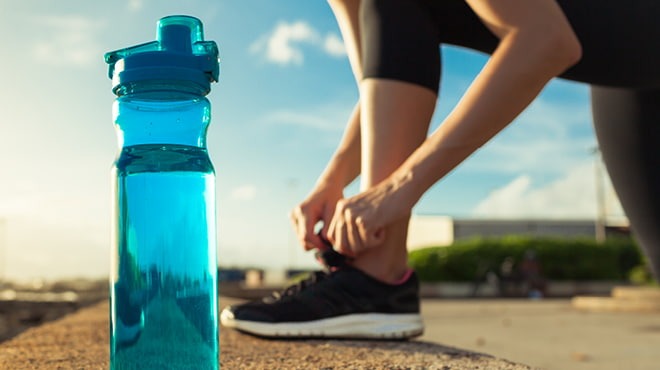Are you breathless with anticipation? Finding it hard to sleep at night? It’s like waiting for a holiday or birthday celebration — race day is almost here. You’ve worked hard for weeks preparing for this big event. It’s finally time to put your feet on the pavement and show what you can do.
Let’s go over a few last-minute tips as you prepare for the big day:
Final fueling
You may receive helpful advice about what to eat as your race day approaches. These tips might include loading up on carbs the night before to give you an energy base, or using energy gels or bars to give you a boost.
Diverging from your regular diet or adding new variables on race day isn’t recommended. Stick to your dietary training schedule so race day is just another day. For example, if you opt for energy bars or gels, add them to your training runs before your race to avoid a shock to your digestive system.
Your biggest prerace meal should be lunch the day before the event. Light exercise that evening will help transport fuel to your muscles in preparation for the race. It’s OK to have extra carbs, but eat them at lunch instead of dinner.
Foot care
Proper foot care is essential before putting your feet up against the punishment of a long race. Trim your toenails. Breaking a toenail in a race can ruin your day. Don’t buy a new pair of shoes just before the race.
Race pacing
Excitement on race day can lead some runners to push harder and run faster than they have during training. Do your best to stay within your planned pace. Mentally prepare yourself to avoid letting the adrenaline rush cause you to leap off the starting line too quickly. Once underway, try not to stress about your pace. Realize that some days you’ll have better runs than other days.
Rehydrating
Rehydrate at a couple of points along the route. Plan to rehydrate around miles six or seven and again around miles 13 to 15. Once you’ve finished the race, make sure you rehydrate and take something that also replenishes your electrolytes in tablet or liquid form.
Warning signs
Stay alert for signs of heat exhaustion or heatstroke in yourself or other competitors. Notify medical personnel if you or another runner experience cramps or lightheadedness or go from profuse sweating to nausea and vomiting.
Heat exhaustion can transition to heatstroke, which is much more dangerous. Warning signs of heatstroke include rapidly elevated body temperature, rapid heart rate, rapid breathing and loss of mental capacity. Seek medical attention immediately.
Ready to run
This is what you’ve been working toward, and you’re ready. As you wait for the starting signal, take a moment to appreciate how far you’ve come. Running a distance race should be rewarding and fun. Have a good time, and enjoy the race.
Beau Johnson is a physical therapist in Onalaska, Wisconsin.





